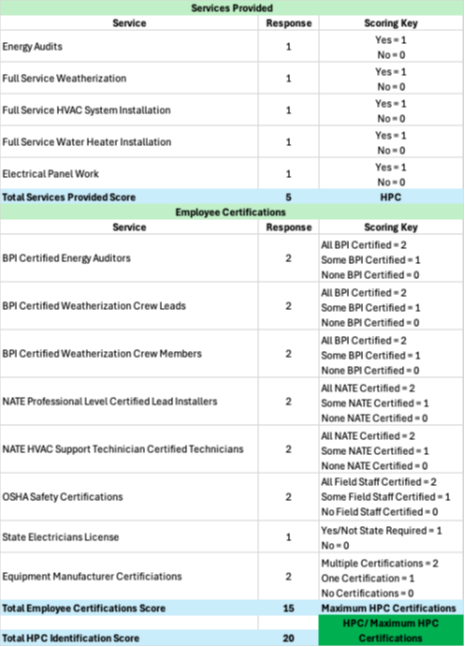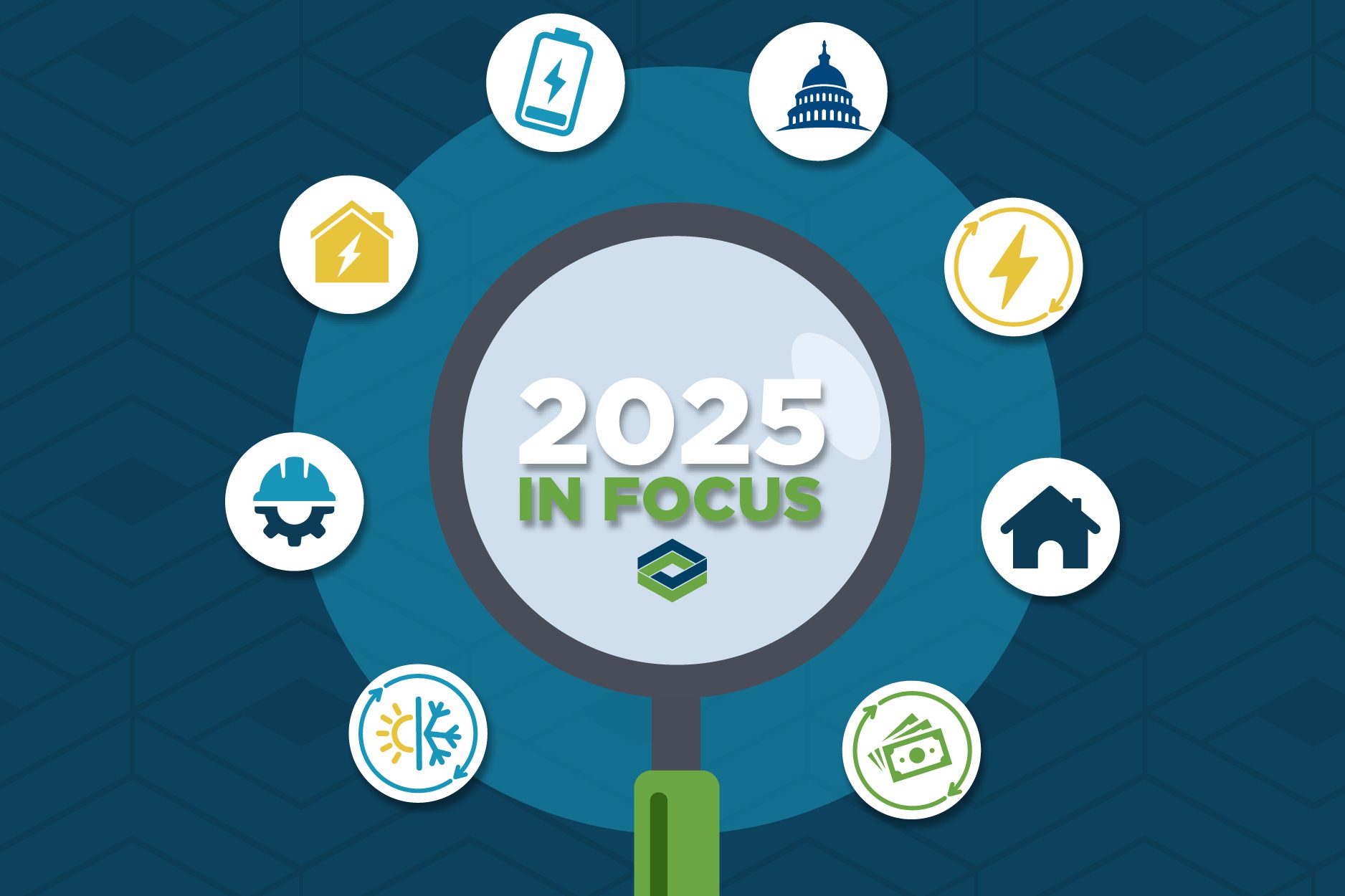Aug 27, 2025
A Unicorn and a Pegasus Walk into a House—This Isn’t a Joke
True home performance contractors are hard to find when your programs need them most. What can you do about that?
By: Joe Nunley
The state of our energy efficiency industry, and the energy industry at large, is at a critical inflection point. We need to reduce greenhouse gas emissions to reduce the impacts of climate change. The best way to do that is to limit our fossil fuel emissions by electrifying buildings while transitioning toward low-to-no emission electricity generating sources. Meanwhile, our power grid is strained; the further electrification of buildings will add more load and the transition to cleaner generation sources will rapidly outpace the demand on the grid.
The solution to this problem is multi-faceted. So, let’s start with something we should all agree on because the data doesn’t lie: reducing our energy usage through energy efficiency is the most cost-effective part of the solution. Residential energy efficiency programs across the country understand this and are increasingly pairing their energy efficiency programs with electrification practices to impact the change necessary to meet our needs. To put it simply: the best way to limit the strain on our grid while electrifying our homes is to make sure the building is performing efficiently, by weatherizing the envelope before transitioning to high efficiency electric space conditioning.

Now to dump another problem on you: combining weatherization and building electrification is no easy task. It sounds simple enough, but the worlds of HVAC and weatherization have been mostly siloed since their existence. What those silos created is a long and expensive journey for a customer participating in these programs. Customers must have multiple assessments done on their home by different contractors and essentially manage their own project by coordinating between the weatherization contractor to improve their building envelope, the HVAC contractor to install a high efficiency heat pump and ventilation, and the plumber to install their heat pump water heater.
While some programs have recognized this challenge and established a “turnkey” process combining all assessments, ideally, into one visit, the customer still endures multiple installation appointments to complete their project. That is assuming the assessment was completed in one visit, which has not always proven successful to date. While I applaud efforts to create a “turnkey” program design, there is a better way to build this mousetrap while providing better service to your customers, creating jobs, and building the local economy.
Enter the home performance contractor, or HPC.
In this article I am going to discuss what it means to be a true home performance contractor, the challenge program administrators and implementers are facing in finding home performance contractors, and some program design options to overcome these challenges and run a successful program.
What is an HPC and Why Are They Important?
Definitions matter, so before we dive right into program design, let’s first discuss what it means to be a home performance contractor.
You may feel like we shouldn’t have to define what a home performance contractor is, but unfortunately, this term is often used incorrectly. Too many programs are calling any energy efficiency contractor an HPC, and too many contractors are calling themselves a home performance contractor as a result. To put it simply, an HPC is a contractor that has the capability and credentials necessary to perform any project on a home that improves the performance of that home from the standpoint of energy efficiency.
We have been taught since the emergence of the weatherization industry that the house is a system. The building envelope, HVAC systems, and water heating systems have dramatic interactive effects and should be addressed in conjunction. A home performance contractor must have the capability to perform an energy audit, HVAC system sizing, and an electrification readiness assessment, as well as install building shell measures, HVAC systems, and water heating technology. All under one roof.
No matter how good a program is at marketing or how much is paid in incentives, the customer must fully understand and be onboard with the process for any project as complex as weatherizing and electrifying their home. It is important to remember that even with the best design, these projects take a long time, are invasive and, quite frankly, messy.

Customers must accept that their house will be completely taken over for a week or more and must also commit to learning how to effectively operate their upgraded house as a system. This is what makes HPCs critically important to any program. The customer is provided a single point of contact, a single point of failure, and the fewest number of appointments possible to complete a highly complex project. Add in an HPC’s ability to effectively implement all the necessary project workflow processes and quality control practices and you have the best recipe for program success.
At this point, I hope you are thinking, “This makes so much sense, why doesn’t every program just use HPCs?” That leads us to another problem. Home performance contractors, as defined above, are few and far between. They are becoming unicorns in our industry (don’t worry, I’ll get to the Pegasus referenced in the title of this article soon!).
What Do You Mean HPCs Are Unicorns?
I know that unicorns are fictional creatures and that HPCs do exist. But a little humorous hyperbole never hurt anyone, right?
Now that we are on the same page about what an HPC is, it is important to understand there are far fewer HPCs in the industry than necessary to meet program goals, let alone the goals of overarching climate policy objectives. I could go on for 50 pages, profiling the nature of HPCs state by state, but this isn’t an evaluation report or a potential study, and unlike either of those two, I’d actually like you to read this and get something from it.
Below are three key examples of the status of HPCs in states with robust energy efficiency offerings prime for HPC participation. These examples are replicated almost everywhere in the country.
New Jersey
The largest utility company in New Jersey offers a Home Energy Solutions Rebate Program for its customers. The program offers incentives that cover a large percentage of home performance projects and the ability to access 0% on bill financing spread over five years for the remaining project cost. The program lists 39 participating contractors, 32 of which offer services classifying them as HPCs. However, nearly 100% of the completed projects in the program include only air sealing and insulation. This seems to indicate that the participating contractors are either not truly HPCs in their practices or that customers are only interested in air sealing and insulation services. If the latter were true, this would be at odds with participation rates in HVAC rebate programs versus air sealing and insulation programs across the country, leading to the conclusion that very few, if any, participating contractors are operating as HPCs.
Wisconsin
The utility companies in Wisconsin collaborate in offering one statewide energy efficiency portfolio of programs called Wisconsin Focus on Energy. Having the same program offerings throughout the state is highly favorable to contractors and customers alike, making it much easier for a contractor to operate in multiple utility service territories while keeping processes and customer offers the same. This environment is ripe for an HPC to excel. However, the Program Administrator for the Focus on Energy Portfolio shared that only 1% of the contractors participating in their Whole Home Program offering are HPCs and they have been struggling to interest contractors in expanding their service offerings to become HPCs.
Massachusetts
The Mass Save Program has been the shining example of energy efficiency success for the last two decades. With approximately $1.5 Billion budgeted annually for the 2025-2027 program cycle, it is the largest utility driven funding source for energy efficiency in the country. In the last two program cycles, a heavy focus on heat pump installations paired with weatherization services should lead to a robust market of HPCs. However, of the nearly 1,000 contractors participating in their contractor network throughout the Commonwealth, only approximately 8% offer the services to be identified as true HPCs.
These three statewide examples show the lack of HPCs working in energy efficiency programs. This is true even in states where programs are coordinated at a statewide level, like Wisconsin and Massachusetts, and where the energy efficiency and electrification budgets are the largest in the country (also Massachusetts).
What Makes an HPC a Pegasus?
The use of HPC unicorns is a good first step in overcoming the challenges for energy efficiency programs, including electrification. However, implementing these programs for market rate customers who can obtain project financing and often afford to pay for these costly projects with the provided incentives is difficult enough. Attempting to offer these services for our most vulnerable low-income population adds a new level of complexity and difficulty.
Low-income populations are among the highest energy users and are at the mercy of programs that will fully subsidize energy efficiency and electrification projects and the contractors willing to work on these specialized programs. This is where the Pegasus comes in. A Pegasus is an HPC that works on dedicated low-income programs. If you are asking yourself, “How is a Pegasus any rarer than a unicorn? They are both fictitious.” Just stop. You are missing the point.

The point is that even fewer contractors work on low-income programs because of the additional challenges, such as more restrictive program compliance requirements, a more complicated housing stock, an oftentimes more difficult customer base, and a lower overall profit margin for contractors. This is why most low-income program contractors are non-profit, community-based agencies.
However, as program funding increases based on the growing need for energy efficiency services for low-income populations, the agencies can’t keep up with the demand. In these cases, programs either expand to for-profit contractors or agencies subcontract to for-profit contractors.
While data on low-income program contractor networks is not as readily available as market rate programs, there is one glaring example that highlights the lower number of HPC Pegasi in the market. The Inflation Reduction Act Home Electrification and Appliance Rebate Program built into its design a bonus rebate to be paid directly to the contractor for every low-income job they complete, just for being willing to work in low-income homes. Why would DOE add this incentive if contractors were open to the challenges for working in low-income homes?
Program Design Options
Hopefully you haven’t lost all hope by now and you are still with me. If you have lost it, let me try to bring you back to team hope. Now that we understand the problem and what a unicorn and a Pegasus represent in this context. Let’s look at what you, as a program administrator or implementer, can do about it. The program design options below are presented at a high level. Each stage in the designs require thoughtful planning and specified implementation strategy to fit the needs of whatever market you are in.
HPC Identification
If you want to start designing your program around HPCs, you first need to understand the status of the contractors in your current contractor network and the services that they can provide for your customers. Below I have included an example HPC Identification Questionnaire with built in scoring logic. This tool is simple and automated to be used to evaluate each contractor in your network. This example is populated with a perfect scoring HPC.
Once you have classified your existing contractors, you can more easily make an informed decision about the best program design option will fit the needs of your program. Each of the design options I present have their own unique challenges and benefits.


Design Option: HPC Prioritization
This design concept is to reward home performance contractors by enrolling them into a higher tier of participation in your contractor network. Home performance contractors shouldn’t remain in your highest tier simply for being HPCs. You should ensure they are doing quality work on behalf of your program by establishing performance criteria based on the key performance indicators (KPIs) that are important for your program.
The benefits you can provide this higher tier enrollment for HPCs could vary depending on the capabilities and limitations of your specific program. Some benefit options could include project lead referrals, co-branded marketing, direct access to program management, expedited application processing, etc.
As a realist, I know that no program design is perfect. Below are the pros and cons of the HPC Prioritization program design.
Design Pros
- Better customer service
- Less customer drop off throughout the customer journey
- More comprehensive projects
- Better overall savings and bill reductions
- Higher overall program participation
- Promote growth in the overall number of HPCs
Design Cons
- Risk of alienating non-HPC contractors
- Fewer contractors at launch, while the HPC market develops
Design Option: Contractor Partnerships to make HPCs
This design concept is to reward contractors that form partnerships between companies to essentially operate as home performance contractors, along with those that are already HPCs. You would provide all the same benefits as the HPC Prioritization design above but would also need to include services to help contractors identify and form partnerships to operate as HPCs. Below are the pros and cons of the Contractor Partnerships to make HPCs program design.
Pros
- Better customer service (maybe not right away, see cons)
- Less customer drop off throughout the customer journey (maybe not right away, see cons)
- More comprehensive projects
- Better overall savings and bill reductions
- Higher overall program participation
- Promote growth in the overall number of HPCs
- Less contractor alienation
Cons
- More complex and labor intensive to implement
- Longer lead time to build HPCs through partnerships
- A lot of process kinks to work out as multiple companies develop processes to work together for a seamless customer experience
- Multiple egos at play with up to three contractors per partnership needed to successfully execute
- Potential for poor customer service as the process develops
- Potential for more customer drop off throughout the customer journey as the process develops
Conclusion
The reality is there is no single solution that is going to reduce our greenhouse gas emissions and the strain on our electric grid. This is an all-hands-on-deck situation. But for residential energy efficiency with electrification programs, the solution must lean heavily on existing HPCs and work to develop more quality contractors into HPCs. Let’s make this myth a reality. Without it, a clean energy future where the lights always come on when you flip the switch will be the unicorn and the Pegasus.




